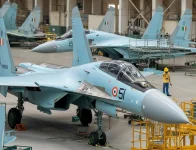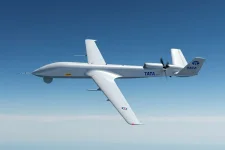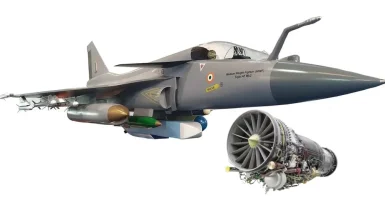- Views: 3K
- Replies: 18
Hindustan Aeronautics Limited (HAL), India's leading aerospace and defence company, has issued an urgent Request for Quotation (RFQ) seeking international expertise to tackle unexpected internal noise levels discovered in its Light Utility Helicopter (LUH) prototypes.
The RFQ, published in late March 2025 by HAL's Rotary Wing Research & Design Centre (RWR&DC) in Bangalore, invites bids for consultancy services focused on noise reduction within the helicopter.
With a tight submission deadline of April 4, 2025, HAL is demonstrating its commitment to resolving the issue promptly to ensure the LUH meets stringent standards for performance, crew comfort, and operational readiness.
The LUH is a modern, 3-ton class, single-engine helicopter developed entirely in India by HAL's RWR&DC. Designed with a side-by-side seating arrangement for the pilot and co-pilot, it incorporates advanced features like a four-bladed hinge-less main rotor and a bearing-less tail rotor system.
This versatile aircraft is intended to replace the Indian Armed Forces' ageing fleet of Cheetah and Chetak helicopters, performing roles such as reconnaissance, troop movement, and medical evacuation.
HAL also envisions civilian applications, including search and rescue operations and utility transport. Key features include a modern glass cockpit and the Shakti-1U engine, co-developed with Safran Helicopter Engines.
However, recent developmental flight testing on an LUH prototype has identified a significant challenge: internal noise levels within the cockpit and cabin exceed specified limits. Measurements revealed that the noise surpasses the thresholds set by the U.S. military's MIL-STD-1474D standard for acoustic noise limits, particularly between 500 Hz and 8,000 Hz.
For example, noise levels reached up to 99.4 decibels (dB) at the co-pilot station at 500 Hz, significantly higher than the 91 dB limit. At 2,000 Hz, readings peaked at 105.6 dB, compared to a standard limit of 82 dB. Such elevated noise, likely generated by the complex interaction of rotor systems, engine vibrations, and airflow, poses potential risks.
While high noise levels are inherent in helicopter operations, exceeding established military standards like MIL-STD-1474D raises concerns. Continuous exposure to noise levels above 100 dB can cause crew fatigue, impair hearing, hinder clear communication, and potentially reduce situational awareness – all critical factors during demanding military missions.
Furthermore, excessive cabin noise could negatively impact the LUH's attractiveness in the competitive civilian market, where passenger comfort is a key consideration. HAL's swift action in issuing the RFQ underscores its dedication to delivering a fully compliant and refined helicopter.
The RFQ specifically calls for proposals from global and Indian firms specializing in acoustics, aeronautical engineering, and noise reduction technologies. HAL requires consultancy services to conduct a thorough analysis of the noise sources – potentially linked to the main rotor, tail rotor harmonics, engine acoustics, or airframe vibrations – and recommend effective solutions.
These potential fixes could include passive methods like installing advanced soundproofing materials and vibration dampers, implementing active noise cancellation technology, or making subtle aerodynamic modifications to the airframe. The chosen consultant will work with HAL to validate solutions while carefully balancing the LUH's weight, overall cost, and flight performance.
This initiative highlights HAL's rigorous development and quality assurance process for the LUH programme. The helicopter has already achieved significant milestones, including successful high-altitude flight trials in the Himalayas (Ladakh region) and receiving a provisional type certificate from India's Directorate General of Civil Aviation (DGCA) in 2023.
With three prototypes having logged over 300 test flights, the LUH is advancing towards operational clearance. The Indian Army and Indian Air Force have placed combined orders for 187 units (126 for the Army, 61 for the Air Force). Addressing the internal noise issue is considered a crucial final step before achieving full certification and commencing deployment, anticipated by late 2025.
The LUH is a prominent example of India’s “Make in India” initiative in the defence sector, aiming for significant indigenous content. HAL has ambitious plans to manufacture up to 1,000 helicopters over the next two decades, including potential exports.
Successfully attenuating the internal noise is not merely a technical requirement; it is vital for enhancing the LUH's competitiveness against international platforms like the Airbus H125 in the civilian market and ensuring optimal crew endurance and effectiveness during vital military operations.



